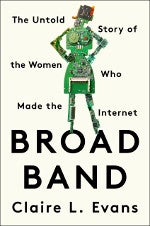Grace Hopper is one of those iconic figures that really needs no introduction. During her long career in the United States Navy, she was a key figure in the early days of modern computing. If you have been involved in open source or technology in general, chances are you have already heard several anecdotes about Grace Hopper. The story of finding the first computer bug, perhaps? Or maybe you have heard some of her nicknames: Queen of Code, Amazing Grace, or Grandma COBOL?
While computing has certainly changed from the days of punch cards, Grace Hopper's legacy lives on. She was posthumously awarded a Presidential Medal of Freedom, the Navy named a warship after her, and the Grace Hopper Celebration is an annual conference with an emphasis on topics that are relevant to women in computing. Suffice it to say, Grace Hopper's name is going to live on for a very long time.
Grace Hopper had a career anyone should be proud of, and she accomplished many great things. Like many historical figures who have accomplished great things, sometimes the anecdotes about her contributions start to drift towards the realm of tall tales, which does Grace Hopper a disservice. Her real accomplishments are already legendary, and there is no reason to try to turn her into the computer science version of John Henry or Paul Bunyan.
To that end, here are six books that explore the life and legacy of Grace Hopper. No tall tales, just story after story of Grace Hopper, a woman who changed the world.

Broad Band: The Untold Story of the Women Who Made the Internet
by Claire L. Evans
In Broad Band: The Untold Story of the Women Who Made the Internet, Claire L. Evans explores the lives of several women whose contributions to technology helped to shape the internet. Starting with Ada Lovelace and moving towards modern times with Grace Hopper and others, Evans weaves an interesting narrative that highlights the roles various women played in early computing. While only part of the book focuses on Grace Hopper, the overarching narrative of Evans's work does an excellent job of showcasing Hopper's place in computing history.

Grace Hopper: Admiral of the Cyber Sea
by Kathleen Broome Williams
Published by the U.S. Naval Institute Press, Grace Hopper: Admiral of the Cyber Sea explores Grace Hopper's naval career in depth. It covers a wide range of fascinating computer topics that occurred during Hopper's long career. Covering everything Grace Hopper did during her career, from joining the WAVES during World War II to her final retirement in the mid-1980s, Williams does an excellent job of exploring Grace Hopper's career and telling the broader story of modern computing.

Grace Hopper and the Invention of the Information Age
by Kurt W. Beyer
Kurt W. Beyer's Grace Hopper and the Invention of the Information Age aims to bust myths that have grown up around Grace Hopper in the public discourse while crediting her with her impressive accomplishments. Beyer notes that the disconnect "between rhetoric and reality" began while Hopper was still alive, which was, in part, a result of Grace Hopper enjoying her time in the limelight. Over the course of 400 pages, Beyer separates myth from fact and tells the story of Grace Hopper that is interesting without resorting to myth-building. Even with all the myth-busting, Grace Hopper and the Invention of the Information Age is a positive and honest exploration of Grace Hopper's substantial role in early computing.

Grace Hopper: Queen of Computer Code
by Laurie Wallmark and illustrated by Katy Wu
Grace Hopper: Queen of Computer Code is an illustrated book aimed at young children. The narrative covers many of the major events in Grace Hopper's life. It starts with her childhood spent tinkering with clocks and building an elevator for her dollhouse before moving on to her adult career. The various anecdotes about Hopper's life are simplified, as one would expect in a book written for children, but that is more a function of writing for the target audience than any intentional attempt at myth-building. Wallmark's narrative is an excellent retelling of Grace Hopper's life, and Wu's lovely, often full-page illustrations make this book an engaging read for readers of all ages.

Grace Hopper: The Woman Behind Computer Programming
by Nancy Loewen
Part of the Smithsonian Little Explorer series, Grace Hopper: The Woman Behind Computer Programming is a 32-page children's book written for readers between six and eight years old. While the book is very, very brief, Loewen hits most of the highlights from Grace Hopper's life. Loewen's writing is supported by numerous photographs, some color and some black and white, that help the reader connect with the facts presented in the writing. There is also a section of "Critical Thinking Questions" and some recommendations for additional reading.

Grace Murray Hopper: Working to Create the Future
by Carl J. Schneider and Dorothy Schneider
Grace Murray Hopper: Working to Create the Future is a short biography of Grace Hopper written for younger readers. At under 70 pages, it is very brief, but it does cover most of the key events in Grace Hopper's life. There is a timeline of her life, a list of books for further reading, and many photographs and sidebars highlighting quotes and other interesting facts. Each chapter ends with "Points to Ponder," which are opportunities for readers to reflect on what they have read. There is also an "Afterward to Parents" that provides tips for parents about how to they can help their children learn the lessons the book teaches.









Comments are closed.